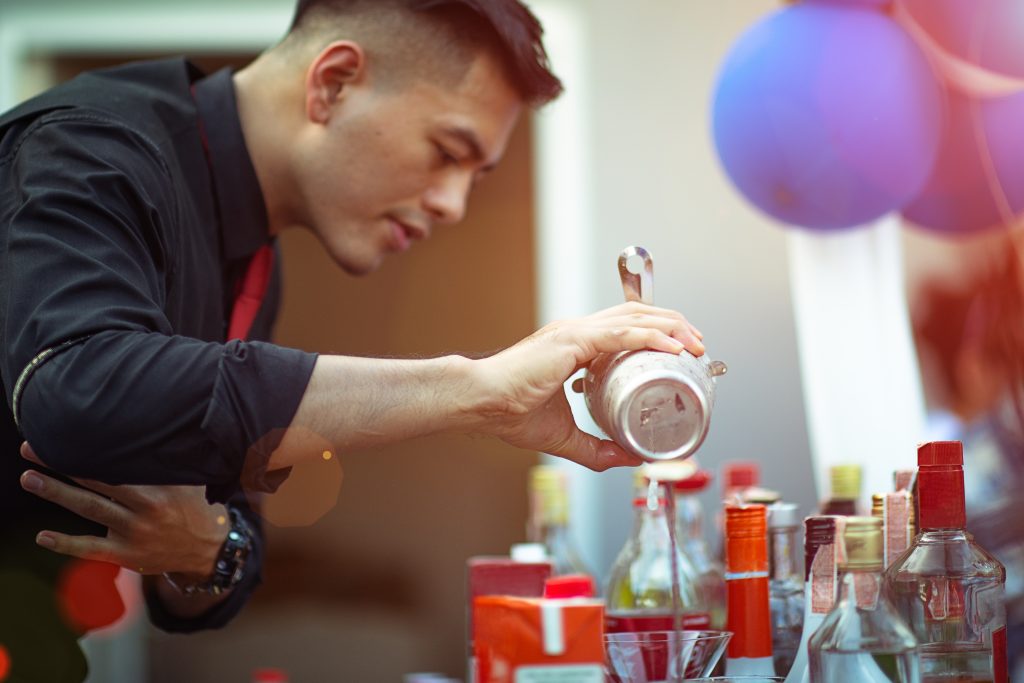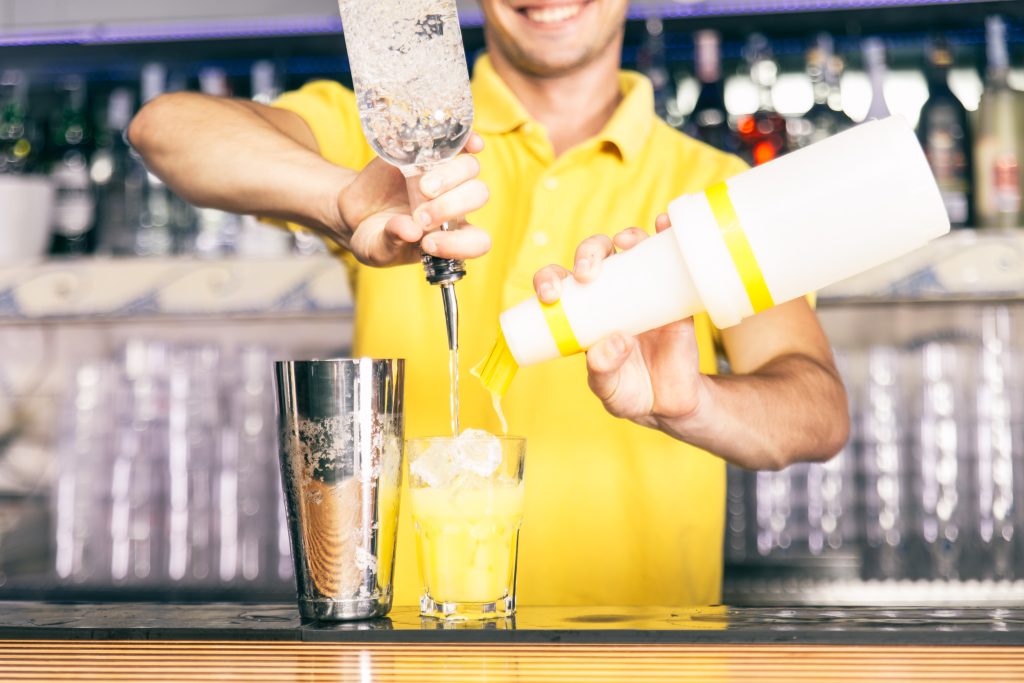There have been many debates on what learning is, but it all comes down to mastering a new skill in the end.
Nowadays, many different forms of learning are available, making it more accessible to a more considerable amount of people. Traditional education would usually occur in a classroom setup where students would attend in person. Most people would think of this form of learning when asked about education.
With advances in technology, online learning has become a modern method for students to use. Learning can now take place in the comfort of the home, usually with a more flexible schedule than traditional learning.
While both methods could be helpful to the learning process, let’s see how they could contribute or hinder bartending students:

In-Person Learning For Bartending
Sitting in an actual classroom at the Local Bartending School, it may be the best method for bartenders to learn the tricks of the trade.
The person who would teach the class allows for notes of extra information not contained in the standard curriculum. In-person learning allows for the presenter’s experience to be carried over into the course, and they have the opportunity to ask questions to gain an even deeper understanding.
Students may get the opportunity to see a real-life presentation of how the drinks are made and how to handle the various items at a facility like the Canada Bartending School where the esthetic could be lost for other forms of learning like an online platform. Learning hands-on would provide the students a tangible experience to further cement the theoretical learning. Thus, it allows to have best possible customised learning.
In-person learning takes place according to a set schedule which may make it difficult for all learners to attend at the same time. Classes would also have limited capability to handle large numbers of participants because the venue may be too small, or the presenter could lose the attention of such a large group. Students may also not receive one-on-one attention in larger groups.

Online Learning For Bartending
Each course subject would have two components that students would have to master: theory and practical application. Bartending is no exception to this rule.
Students would have to understand theoretical concepts like the chemistry of alcohol and their various mixtures, which flavors would mix well together, the new substances formed after mixing, and the density of the different liquids, amongst other exciting facts.
It may take a while for some students to learn such a vast array of information, and online learning could allow them to repeat essential lessons over and over again until they remember and understand.
Although online learning would be an excellent platform for students that learn visually (by seeing) or for auditory learners (that hear), it may fall short for students that learn kinesthetically (by practicing). With new applications for virtual reality learning, students may be able to hone their skills digitally after all.
Online learning platforms need an internet connection and a device that would handle the video streaming or downloading of the course material. It may prove difficult for those who don’t have access to these.

In-Person Vs. Online
When comparing the two learning methods, it is easy to see that both have benefits and some aspects that may not resonate for everyone.
While the in-person learning experience could be great for students to get an in-depth understanding and ask questions, the online classes could provide the students with the freedom to choose which presenter they would want to learn from the most. And this choice and freedom are some of the perks for online learning.
In-person learning is less flexible with the classes and hours being fixed, which could have students not all attend a specific presenter’s classes. They would have to choose a time that would suit their schedule and might not always align with the presenter’s timetable. Online classes may have the advantage of going through sections uninterrupted, but there may be some helpful questions from other students to miss out on.
In-person classes may be more expensive than the online version, and online courses could further save on travel costs. Although, the experience and knowledge gained from asking professionals in person could be more valuable to new students.
Students can socialize and assist their classmates when physically practicing their skills together, whereas online learning is primarily self-study.

Combining The Two
Some institutions have seen the benefits of combining in-person and online training. The more theoretical part of the course could be presented online while students will meet with their presenter in person for practical assignments.
Having the two combined gives students the best of both worlds, and presenters benefit from it. The combined classes offer the presenter the opportunity to record the standard theory. At the same time, question and answer sessions are made possible in smaller groups saving time and effort for everyone involved.
Combining the methods would be beneficial for bartending students to sharpen their knowledge at home and in the classroom.
The Verdict
Bartending is a practical, hands-on skill that may take months to perfect. Students train for hours on end to find the right way for them to mix those delicious cocktails. Understanding the science behind the beautiful drinks helps students make the best choice of syrup, alcohol brand, glass, and other ingredients to put into their creations.
Most patrons are unaware of the hours of schooling it takes to be a professional bartender, and some may underestimate the effort, sweat, and sometimes tears those students go through. Bartending is not ‘just something you pick up’ or a good party trick. It is a discipline.
Students are in for a treat when they find the most suitable study method for their trade. When it is convenient to learn, the subject matter is interesting, and there is enough support, students excel. These students are less likely to quit their studies and are vastly more successful than others with better results.
There may be no definitive answer to answer the question of whether in-person or online training for bartenders is better. Students would have to look at the various options and decide which one they would prefer. Luckily, there are options available for every student wishing to pursue this career; they just need to go out and explore.
